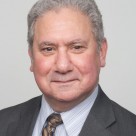WASHINGTON, DC-Friday morning's jobs report by the US Bureau of Labor Statistics was truly a good news/bad news picture. Any movement is good, but a mere 175,000-job gain doesn't move the needle at all.
It's certainly more than jobs, and industry experts are weighing in on the impact these onesy-twosy monthly numbers mean for such issues as the Fed's much-touted quantitative easing and the still-historically low interest-rate environment.
Doug Duncan, Fannie Mae's chief economist, is having trouble reading the tea leaves. “Today's report did not provide additional clarity on whether the Fed's tapering of its asset purchase is a few months away as expected by many market participants,” he said this morning in a statement. “However, recent rises in mortgage rates have not yet tempered consumer expectations regarding the housing market. Overall, the employment report supports our view of continued modest growth amid headwinds from fiscal policy and tailwinds from housing.”
Chris Muoio, Auction.com's New York City-based economist, finds a bit more clarity than does Duncan, and he tells GlobeSt.com that the entire easing debate is “excessively premature. They won't cut back on easing until inflation takes off above 2.5%, and that's way higher than we are currently.” And more to the point of today's report, he says, easing won't begin “until unemployment falls below 6 or 6.5%,” and at the rate the jobs picture is improving, that's a long time in the future.
Muoio is concerned, however about the nature of the gains. “The strongest sector as we look at it was temporary help,” he says, “which is both good and bad.” At least we're starting to absorb some of the slack, but it hasn't really spilled over into permanent hiring.”
Ray Torto, CBRE's global chief economist, agrees, and like Muoio, listened carefully to what the Feds said originally. “For those who are investors and not traders, the outlook is positive,” says Torto, but the slope is not steep. The economy is in need of the monetary medicine of quantitative easing for some time more and rates will not rise significantly.”
But Torto believes the markets will remain volatile, and “real estate investors need to plan for this volatility.” That means they need to “have liquidity, avoid refinancing or an asset sale during a downdraft moment in the market.”
Indeed, the numbers show “that there's little reason worry in the near term about a change in Federal Reserve policy,” says Cushman & Wakefield chief economist Ken McCarthy. “The Fed has clearly stated that the unemployment rate will be the most important near-term driver of policy,” so the month's numbers mean there will be no change for some time.”
McCarthy also addresses the long-standing question of interest rates and whether or not, at last, they might move. Clearly it's inevitable, and a good thing.
“The reason interest rates increase is that the economy is stronger,” he says. “That means the fundamentals that drive value-occupancy and rents will be improving. In the long run, a healthy economy is better for the real estate industry even if it is accompanied by higher interest rates. Despite the recent increase, long term rates are still very near historic lows.”
© 2025 ALM Global, LLC, All Rights Reserved. Request academic re-use from www.copyright.com. All other uses, submit a request to [email protected]. For more information visit Asset & Logo Licensing.








